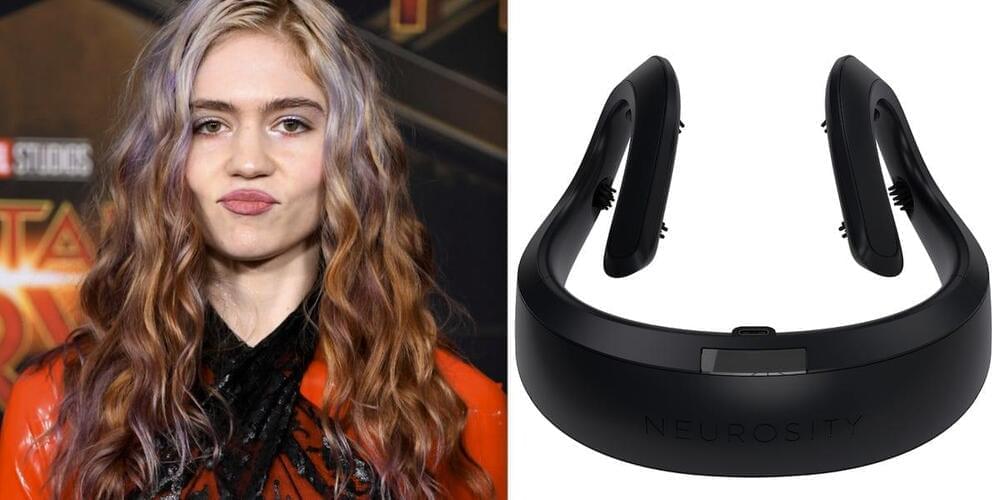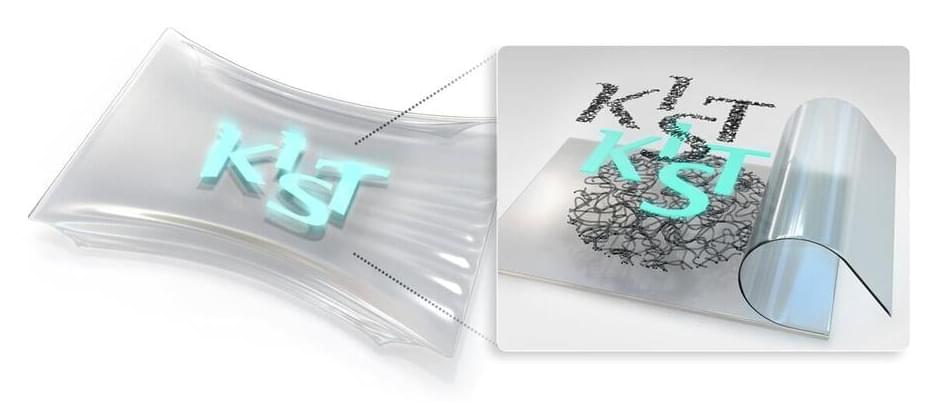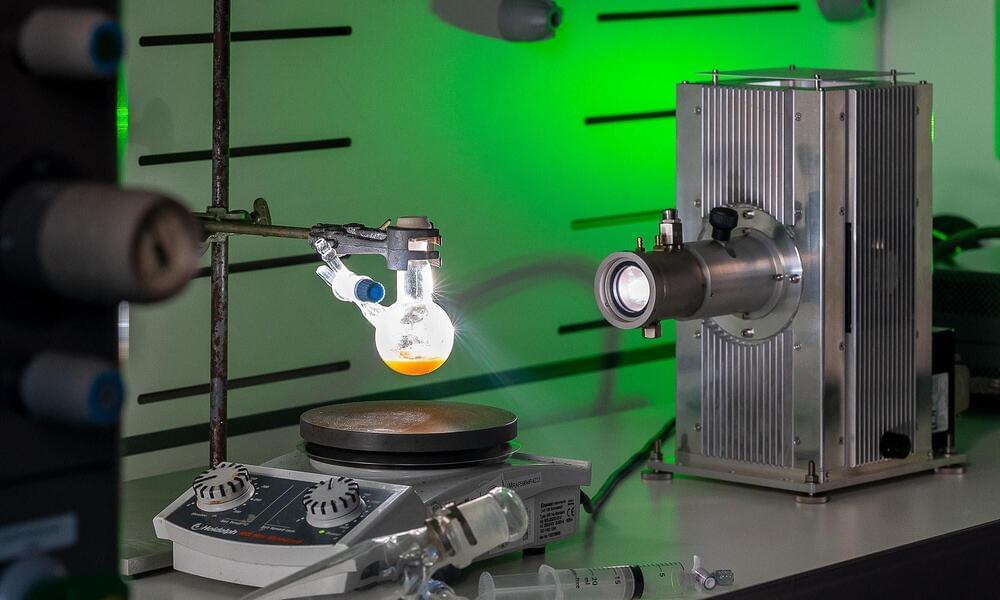Researchers have ‘hacked’ the earliest stages of photosynthesis, the natural machine that powers the vast majority of life on Earth, and discovered new ways to extract energy from the process, a finding that could lead to new ways of generating clean fuel and renewable energy. We didn’t know as.
Category: sustainability – Page 245

Grimes said she got a brain gadget for her birthday from a company competing with Elon Musk’s Neuralink
Neurosity’s headset uses electroencephalogram technology, or EEG, to measure brain activity by placing small metal electrodes on a person’s scalp. If the electrodes detect decreased electrical activity in the brain, the Crown plays music and sounds, or pulses vibrations, hoping those actions will help the user focus.
But some developers, it seems, have taken Neurosity’s tech a step further, turning the Crown into a more traditional brain computer interface that can allow users to control a computer using only their mind.
One owner of the gadget claimed they’ve used it to drive a Tesla, moving the electric car short distances by doing some mental math, which signals to the device that the person wearing it is exerting a lot of cognitive effort.
Grimes got a new brain gadget for her 35th birthday.
“Getting a non invasive brain computer interface for my birthday (!!!!?),” she tweeted Friday. “Yeah it’s a good time to be alive.”
Neurosity CEO AJ Keller confirmed that the singer, named Claire Boucher, had asked for one of the company’s headsets, known as the Crown, in a custom white color.

Tesla Vision Park Assist measurement system proves capable in first tests
Tesla Vision Park Assist provides visual and audio alerts of surrounding objects. This feature uses the occupancy network to predict high-definition outlines of objects 360 degrees around the car. Note: Tesla Vision Park Assist is for guidance purposes only and is not a substitute for an aware driver. Please be attentive and avoid obstacles as required.
This is after being parked for a while, interesting to see how park assist takes a bit to load previous data from before it was parked. Still really impressive work from the @Tesla team pic.twitter.com/LONqouXp85
A number of Tesla owners with vision-only cars who received update 2023.6.9 have shared initial videos of Vision Park Assist’s performance in real-world situations. Tesla Model 3 owner @EVBaymax, for one, observed that the distance estimates displayed in the vehicle are quite accurate, almost to the inch. The Model 3 owner actually verified Tesla Vision’s estimates with a tape measure, and it was quite accurate.

Team develops large-scale stretchable and transparent electrodes
A Korean research team has developed a large-scale stretchable and transparent electrode for use as a stretchable display. The Korea Institute of Science and Technology (KIST) announced that a research team, led by Dr. Sang-Soo Lee and Dr. Jeong Gon Son at KIST’s Photo-Electronic Hybrids Research Center, has developed a technology to fabricate a large-area (larger than an A4 sized paper) wavy silver nanowire network electrode that is structurally stretchable with a high degree of conductivity and transparency.
Transparent electrodes, through which electricity flows, are essential for solar cell-and touchscreen-based display devices. An indium tin oxide (ITO)-based transparent electrode is currently commercialized for use. The ITO-based transparent electrode is made of a thin layer of metallic oxides that have very low stretchability and is very fragile. Thus, the ITO electrode is not well suited for flexible and wearable devices, which are expected to quickly become mainstream products in the electronic device market. Therefore, it is necessary to develop a new transparent electrode with stretchability as one of its main features.
A silver nanowire is tens of nanometers in diameter, and the nano material itself is long and thin like a stick. The small size of the nanowire allows it to be bent when an external force is applied. Since it is made of silver, a silver nanowire has excellent electrical conductivity and can be used in a random network of straight nanowires to fabricate a highly transparent and flexible electrode. However, despite the fact that silver nanowire is bendable and flexible, it cannot be used as a stretchable material.

Developing smart light traps inspired by photosynthesis
Plants use photosynthesis to harvest energy from sunlight. Now researchers at the Technical University of Munich (TUM) have applied this principle as the basis for developing new sustainable processes which in the future may produce syngas (synthetic gas) for the large-scale chemical industry and be able to charge batteries.
Syngas, a mixture of carbon monoxide and hydrogen, is an important intermediate product in the manufacture of many chemical starter materials such as ammonia, methanol and synthetic hydrocarbon fuels. “Syngas is currently made almost exclusively using fossil raw materials,” says Prof. Roland Fischer from the Chair of Inorganic and Organometallic Chemistry.
A yellow powder, developed by a research team led by Fischer, is to change all that. The scientists were inspired by photosynthesis, the process plants use to produce chemical energy from light. “Nature needs carbon dioxide and water for photosynthesis,” says Fischer. The nanomaterial developed by the researchers imitates the properties of the enzymes involved in photosynthesis. The “nanozyme” produces syngas using carbon dioxide, water and light in a similar manner.

Flying taxi service coming to Chicago using eVTOL aircraft
In the latest sign of growing interest in the flying taxi sector, United Airlines and air mobility startup Archer Aviation have announced an upcoming service for hops between downtown Chicago and O’Hare International Airport.
The service will offer a sustainable, low-noise, and cost-competitive alternative to ground transportation for folks traveling to and from the airport, United and Archer said in a release.

Deadly cyclone Freddy has become Earth’s longest-lived tropical storm
Remarkably, the storm has rapidly intensified six times.
Rapid intensification describes an uptick in winds of 35 mph or greater in 24 hours. Research has shown rapid intensification increasing in frequency in many ocean basins because of rising ocean temperatures linked to human-caused climate change.

Ford to build next-gen EV truck at $5.6B factory in 2025
Ford said Friday that its $5.6 billion BlueOval City complex outside of Memphis, Tennessee will include a truck plant capable of producing 500,000 electric vehicles a year.
The first vehicle to come off the line will be a next-gen electric truck, code named Project T3, in 2025.
Construction at BlueOval City, the epicenter for its future EV and battery cell manufacturing and a key component toward its goal to sell 2 million EVs annually by late 2026, began last fall.

AI-powered Google Maps’ immersive view now available for a select few
A few select users will now be able to enjoy Google Maps’ immersive view, according to a blog by the company published last month. The new feature is meant to allow users to reimagine how they explore and navigate, while helping them make more sustainable choices.
“Immersive view is an entirely new way to explore a place — letting you feel like you’re right there, even before you visit. Using advances in AI and computer vision, immersive view fuses billions of Street View and aerial images to create a rich, digital model of the world. And it layers helpful information on top like the weather, traffic, and how busy a place is,” said Chris Phillips, VP & General Manager, Geo, in the blog.
Researchers successfully tested a passenger hybrid-electric plane
Engineering researchers at the University of Arkansas marked a significant advancement in their field by completing a successful test flight of an electric motor drive on a hybrid electric aircraft, according to a university release.
The project may have a substantial impact on the aeronautics sector and have enormously positive effects on environmental quality.